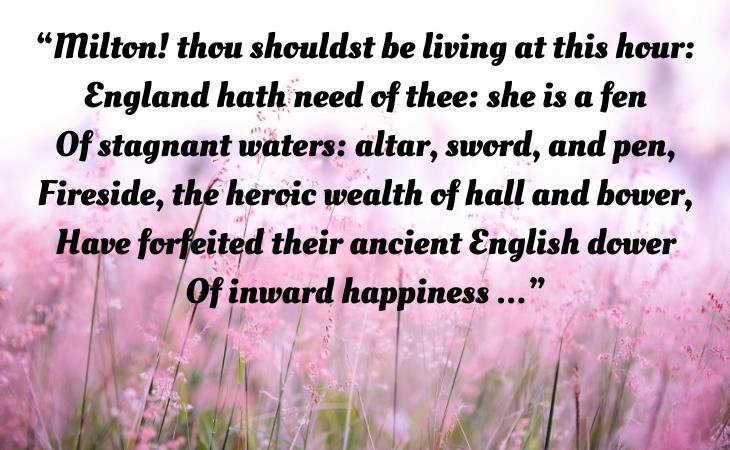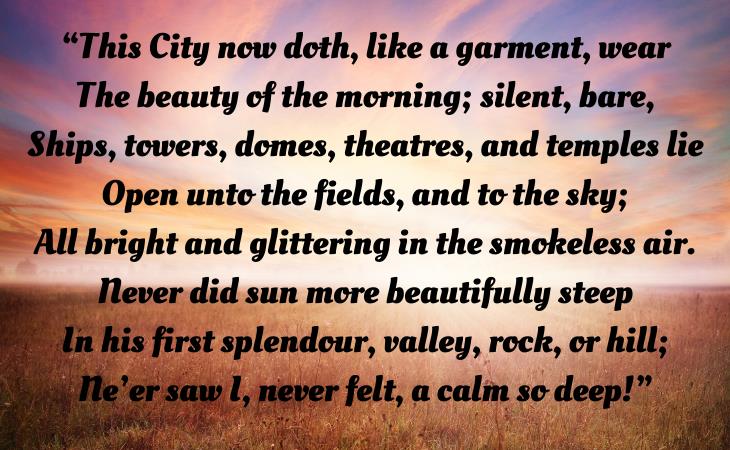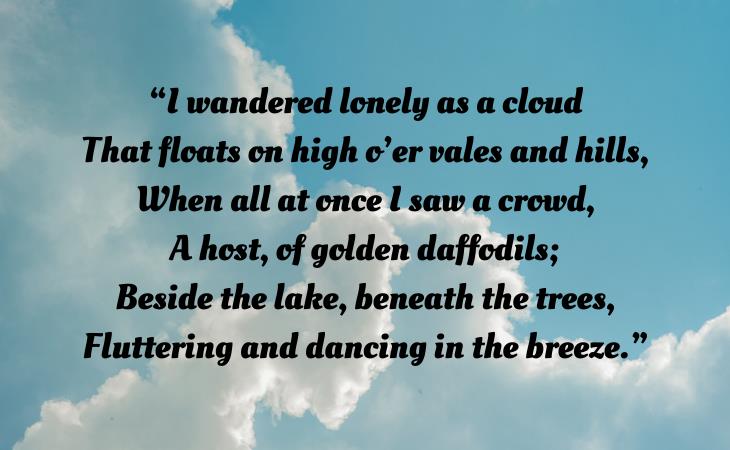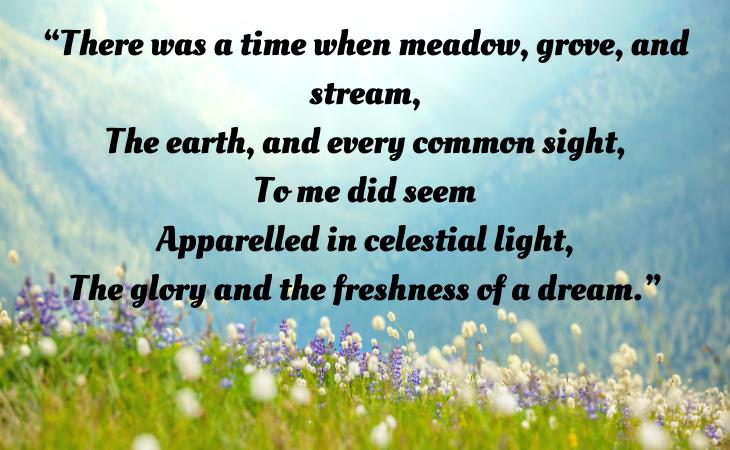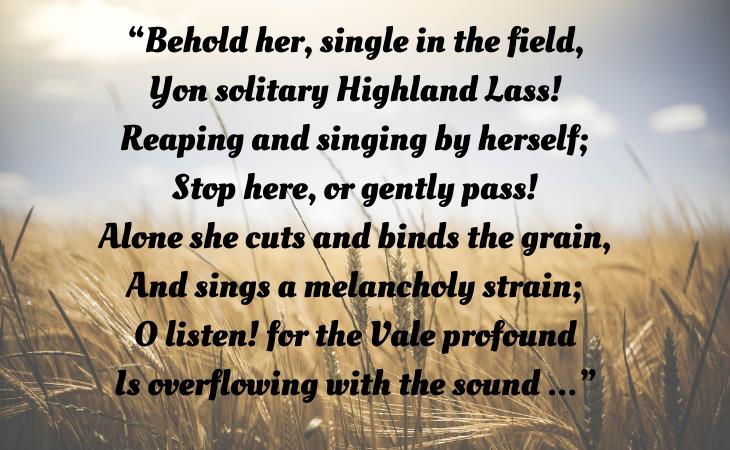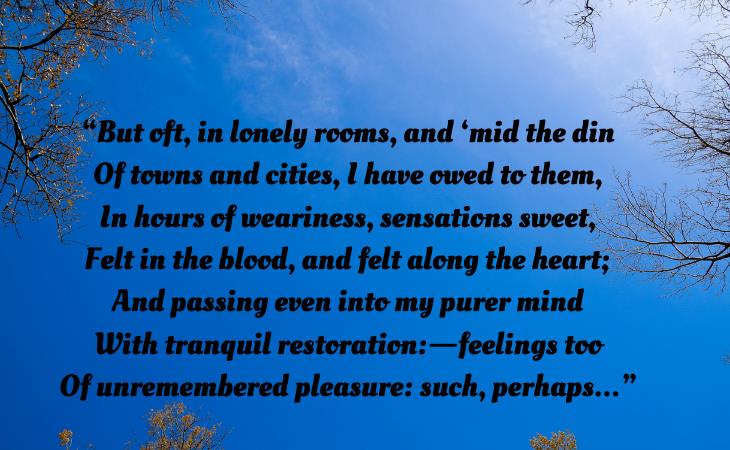"The Prelude" is an important and well-known work by William Wordsworth. It is a long autobiographical poem that details Wordsworth's own life, experiences, and spiritual and intellectual development. Composed over several years and changed countless times, The Prelude is widely regarded as a masterpiece of Romantic literature.
The poem is divided into 14 books and tackles themes such as nature's power, the function of the imagination, and the poet's mental maturation. It beautifully portrays his youth, Lake District experiences, and travels. The concept of the "egotistical sublime," which explores the relationship between the self and the natural environment, is one of the poem's core topics.
The poem is famous for its contemplative and thoughtful tone, as Wordsworth explores his own experiences and the impact they had on his literary sensibilities. It offers vital insights into Wordsworth's poetic philosophy and the development of his distinct style, which highlights the relevance of common language and the spiritual connection between the individual and nature.
You can read the full poem here.
2. London 1802
Wordsworth addresses the poet John Milton (1608-74) in this sonnet, wishing Milton were still alive as his country, England, needs him today. England has become sluggish and corrupt in every way, felt the poet. Everyone has been selfish. Only Milton, it appears, can restore England to her former greatness by reintroducing forgotten qualities.
Wordsworth urges Milton's spirit to guide and inspire England amid a period of social instability and moral decline. Wordsworth's worry about the loss of moral ideals in society is reflected in the poem, as is his conviction in the potential of great literature and the written word to influence constructive change.
You can read the full poem here.
3. Composed upon Westminster Bridge
This is one of William Wordsworth's most well-known and celebrated sonnets. It illustrates Wordsworth's strong love of nature and his ability to find beauty in unexpected places.
Wordsworth narrates a morning view in London in this poem, standing on Westminster Bridge and looking out over the city at sunrise. The tranquility and beauty of the cityscape, which appears almost ethereal in the early morning light, strike him. The poet is taken aback by the sight of the River Thames, the buildings, and the people going about their everyday lives bathed in the gentle, golden glow of dawn.
The poem presents a stark contrast between the busy, industrial city of London and the serene, picturesque setting described by Wordsworth. It conveys a profound sense of awe towards the natural world, even in the midst of an urban landscape. The poet's decision to mention the specific date, September 3, 1802, is significant because it captures a moment of introspection during his journey with his sister, Dorothy Wordsworth.
You can read the full poem here.
4. I Wandered Lonely as a Cloud
"I Wandered Lonely as a Cloud," often referred to as "Daffodils," is a well-known and well-loved poem by William Wordsworth. This poem was written by Wordsworth in 1804 and published in 1807. The poem captures the essence of Romanticism, highlighting nature's beauty, human emotions, and the spiritual connection between the two.
The underlying theme of the poem is nature's therapeutic impact on the human spirit. It opens with the speaker recounting how, like a drifting cloud, he drifted aimlessly, feeling alienated and lonely. His gloomy mood is lifted when he comes across a field of vivid yellow daffodils fluttering and dancing in the breeze near a peaceful lake. His moods are lifted by the sight of these flowers, as well as the natural scenery.
This poem demonstrates Wordsworth's conviction in nature's ability to bring spiritual and mental healing. It also underlines the idea that natural moments of beauty and inspiration can stay with us, providing peace and comfort in times of solitude or suffering.
You can read the full poem here.
5. Ode: Intimations of Immortality
This poem, often referred to as Wordsworth's greatest ode, explores the relationship between the narrator and nature.
This ode is regarded as a pivotal piece in Wordsworth's body of work, reflecting his passionate sensibility and profound meditations on the relationship between youth and adulthood, mortality, and immortality.
The poem is notable for its unique structure, consisting of 11 irregularly rhymed quatrains. Here, Wordsworth examines the idea that, as children, we have a fundamental connection to the spiritual and natural worlds. He claims that in our childhood, we have a sense of immortality and a heightened experience of beauty and awe.
You can read the full poem here.
6. The Solitary Reaper
The poem is known for its simplicity and its focus on a solitary moment in the countryside. It tells the story of the poet's encounter with a lone reaper in the Scottish Highlands. As she works in the fields, the reaper, a young woman, sings a melancholy and beautiful song. Wordsworth is highly moved by the event and considers the ability of her singing to express feelings from the past and the nature around her. He is so mesmerized by the song's tone, expression, and lyrical composition that he asks passers-by to stop and listen to it.
The work is often viewed as a meditation on art's and music's transcendent potential to create deep emotions and connect us to our environment. It also emphasizes Wordsworth's interest in the ordinary and everyday, in finding beauty and purpose in everyday life.
You can read the full poem here.
7. Tintern Abbey
This poem was written in 1798 and first published in Samuel Taylor Coleridge's "Lyrical Ballads," which is considered a cornerstone of English Romanticism. It contemplates the power of nature, memory, and the passing of time.
"Tintern Abbey" consists of 158 lines of blank verse and is organized as a monologue where Wordsworth addresses his sister, Dorothy Wordsworth. The poem is divided into two sections: the first was written on a visit to Tintern Abbey in 1793, and the second during a return visit in 1798.
In this work, Wordsworth showcases the serene and picturesque qualities of the Wye Valley, along with the Tintern Abbey ruins, which he perceives as a place of spiritual refuge. He reflects on how the landscape's memory has sustained him throughout his five-year absence from the location, providing him with a sense of calm and inspiration. Wordsworth contemplates the healing and transformative influence of nature, which he describes as "a presence that disturbs" and "a sense sublime."
You can read the full poem here.


